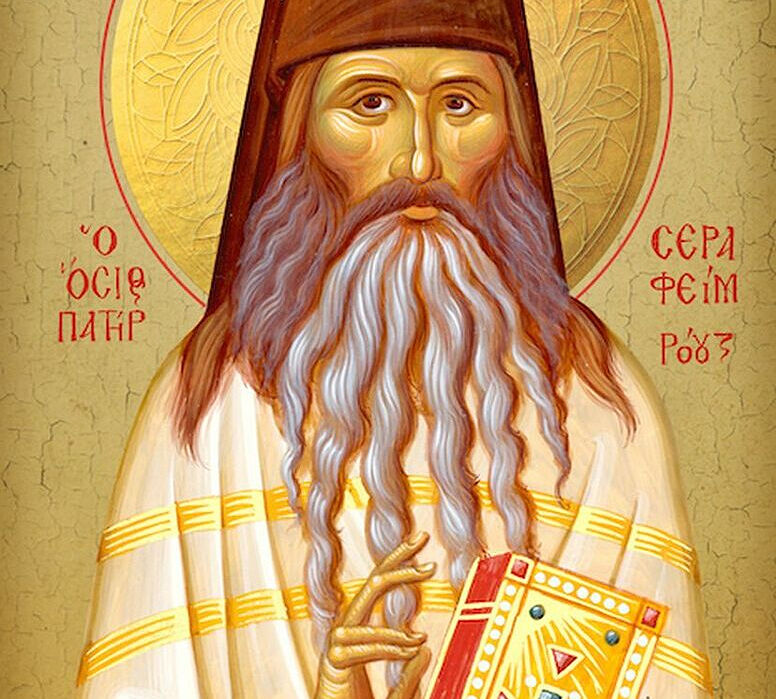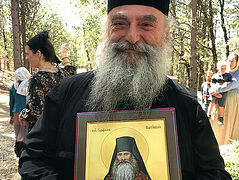Morphou, Cyprus, September 6, 2022
 A Greek icon of Fr. Seraphim (Rose). Photo: uncutmountainsupply.com
A Greek icon of Fr. Seraphim (Rose). Photo: uncutmountainsupply.com
Fr. Seraphim (Rose) is a saint and a personal inspiration in the ministry of His Eminence Metropolitan Neophytos of Morphou of the Cypriot Church, the hierarch himself said in a recent homily.
On September 2, His Eminence served at St. Mamas Monastery in occupied Morphou in northern Cyprus. The day coincided with the 40th anniversary of the repose of Blessed Fr. Seraphim, and the Metropolitan took the opportunity to tell the people about him.
Though he was once a great sinner, he became a saint, Met. Neophytos preached. Moreover, his sainthood has been confirmed by other saints, he said, though without specifying which other saints. The Metropolitan is known to have been acquainted with a number of saints, elders, and eldresses.
He is also well known for speaking of prophecies, signs of the times, and things to come, and as he told the gathered faithful, it was reading Fr. Seraphim’s books that opened his eyes and helped set him on this path.
Met. Neophytos begins to speak about Fr. Seraphim at about the 19:50 mark:
As OrthoChristian reported yesterday, Fr. Seraphim’s sainthood was also testified to by His Eminence Metropolitan Nikoloz of Akhalkalaki and Kumurdo and Kari of the Georgian Orthodox Church, who attended the pilgrimage at St. Herman’s Monastery in Platina, California, in honor of Fr. Seraphim’s 40th anniversary to help inspire the movement to formally canonize Fr. Seraphim among the saints.
Follow OrthoChristian on Twitter, Vkontakte, Telegram, WhatsApp, MeWe, and Gab!




